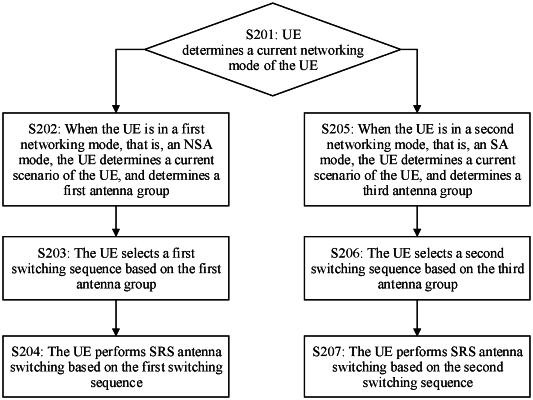| CPC H04B 7/0602 (2013.01) [H04B 7/0404 (2013.01)] | 8 Claims |

|
1. An antenna switching method performed by user equipment (UE), comprising:
reporting to a base station that N antennas are available to the UE for performing sounding reference signal (SRS) antenna switching in a new radio (NR) mode for sending sounding reference signals (SRSs) to the base station, wherein N is a number of total operative antennas of the UE, and the UE operates in both the NR mode and a long-term evolution (LTE) mode;
obtaining an original SRS antenna switching sequence for the SRS antenna switching in the NR mode, wherein the original SRS antenna switching sequence is set based on all N antennas of the UE being available for the SRS antenna switching; and
detecting that a first antenna in a target next antenna set in the original SRS antenna switching sequence is unavailable due to being currently occupied by the LTE mode;
in response to detecting that the first antenna is unavailable for SRS antenna switching, switching to a tentative antenna set for SRS transmission to the base station, wherein the tentative antenna set either replaces the first antenna with a second antenna that is not occupied by the LTE mode, or omits transmission of an SRS originally to be transmitted by the first antenna according to the original SRS antenna switching sequence.
|